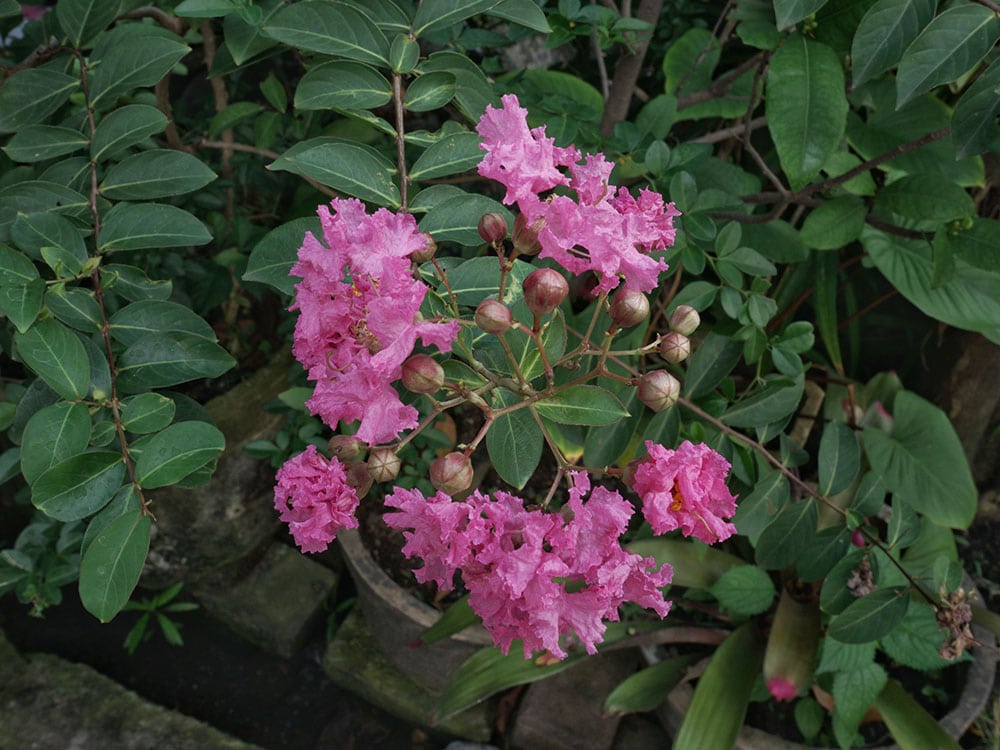Is My Crape Myrtle Dead? (6 Signs to Look For)
-
Codee Chessher
- Last updated:

Crape myrtles are a beautiful, showy tree native to Asia, and specimens are grown all over the world and anywhere there’s warm weather. As some of the latest bloomers of the spring, it can be easy to mistake a dormant crape myrtle tree for a dying or dead one.
The silver lining is that there are several ways you can tell if your crape myrtle is dying, dead, or just lying dormant. Check out the specifics below with us.
The 6 Signs That Your Crape Myrtle Is Dead or Dying
1. Do the Scratch Test
The scratch test is the best way to tell if a tree is dying, dead, or simply dormant. Take a fingernail and scratch away a piece of bark just above the soil. What does that look like to you? Green, wet, and fibrous? Or brown, flaky, and dry? The former indicates a perfectly alive tree, while the latter means your tree is likely already dead.
The scratch test is the most reliable way to see if a tree is dead, but it’s not the only one. Use it in conjunction with other entries below to help confirm or disprove your suspicions.
2. Check for Mushrooms & Fungi

While some fungi on a tree is normal, too much can be a sign that something is wrong. Mushrooms in particular love decaying organisms, and an abundance of them nearby and underneath your tree can be a sign that it’s dying or perhaps already dead. Mushrooms on the trunk of the tree are a more definite sign.
3. Look for Pests & Diseases
Conduct a visual inspection of your crape myrtle tree with disease and pests in mind. To assist you, we’ve gathered some of the most common pest and disease symptoms to look for.
- Powdery mildew: can wilt and cause leaf drop, but not fatal
- Aphids: lots of tiny holes in leaves as well as a heavy bug presence
- Spider mites: produce a yellow, mottled effect on leaves, causing defoliation
- Crape myrtle blight: look for small black spore carriers in the spring and summer months
- Crape myrtle bark scale: a relatively new pest that loves crape myrtle sap, these bugs can yellow leaves and even kill off branches
4. Inspect the Roots

Roots are yet another good indicator of a dying or dead crape myrtle tree. Dig up a foot or so of the soil underneath your crape tree and inspect the roots. If you wish, you can dig up several spots to compare, but make sure you cover them back up again when you’re finished.
Strong, healthy tree roots should be moist, white tendrils in the soil with smaller offshoot roots called feeder roots. If you see any of these become brown, black, or outright black and decaying, your tree is in serious trouble. It may even already be dead in some cases.
5. Check the Branches
Take a branch in your hands and bend it several ways to test its pliability. If the branch is limber and flexible but still strong, chances are good that the tree is still alive. However, some branches are healthier than others and you should check several branches at various levels of the tree’s canopy to be sure.
Another crucial thing to check your branches for is new growth. Dying trees devote all their energy to fighting disease, and dead trees obviously have no energy left. If you see no signs of new growth by the end of spring, like buds, your tree is probably dying or dead.
6. Wait & See

If you’re still unsure of whether your tree is dying or dead after all that checking, go take a rest and just wait. Some trees take longer than others to come out of dormancy, and crape myrtles are late bloomers in the best of times anyway. Short of consulting a qualified arborist, the best method of confirming or denying your suspicions of just time.
Conclusion
Crape myrtles have gorgeous white, red, purple, and pink blossoms, but can suffer health problems that appear similar to dormancy. Use the scratch test and some of the other tips detailed above to get a good enough idea of whether your crape myrtle is dying or dead.
Featured Image Credit: Zoya El, Shutterstock
Contents
